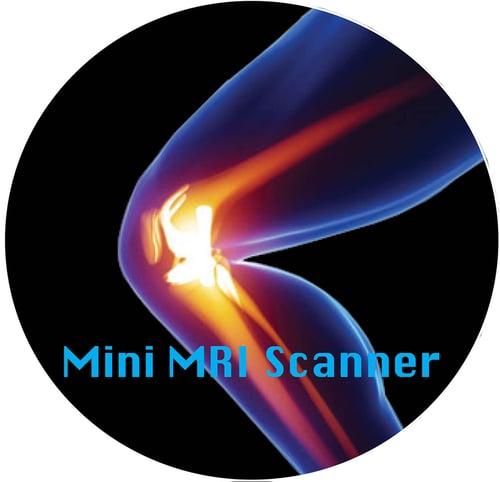Medical imaging technology continues to develop at breakneck speed, with the latest new  development being a Mini MRI Scanner that’s small enough to fit around a patient’s leg. The prototype was developed by researchers at Imperial College London. The device uses a “magic angle” effect that could potentially help diagnose knee injuries more quickly and accurately.
development being a Mini MRI Scanner that’s small enough to fit around a patient’s leg. The prototype was developed by researchers at Imperial College London. The device uses a “magic angle” effect that could potentially help diagnose knee injuries more quickly and accurately.
The study used animal knees and suggests that the technology could be used to show all of the structures of a knee. The device looks like a large metal ring that slips around a patient’s leg. The device could help diagnose anterior cruciate ligament injuries when are common among soccer and football players. The small size of the device could allow it to be used in local clinics and even private practices, which could drastically reduce the amount of waiting times for MRI scans.
Current MRIs do not provide clear images of key components in knee joints like ligaments and tendons.
“Knee injuries affect millions of people and MRI scans are crucial to diagnosing the problem, leading to quick and effective treatment,” said Karyn Chappell, PhD, a researcher and radiographer from Imperials’ MSK Lab. “However, we currently face two problems: connective tissue in the knee is unclear on MRI scans and people are waiting a long time for a scan. This can cause particular problems for women, as they are at greater risk of anterior cruciate ligament injuries. The reasons for this are unclear, but it could be linked to hormones such as estrogen making ligaments more elastic, leading to more joint injuries.”
The way water molecules are arranged in the tendons, meniscus and ligaments make them not visible in MRI scans, according to Chappell.
By using the “magic angle”, the brightness of these tissues depend on the angle between the collagen fibers and the magnetic field of the scanner. If this angle is 55 degrees the image can be bright. The images are very dark at other angles.
Because they are able to change the orientation of the magnetic field they can achieve the “magic angle.” The patient sits comfortably in a chair while the specially designed magnet rotates around the leg and the can orientate the magnetic field in multiple directions.
The mini MRI combines images obtained at different magnet angles and increases the brightness and shows how the collagen fibers are arranged. This provides crucial information about the pattern of collagen fibers in the knee structures. If an image allows you to see the direction of the fibers the tear can be repaired more effectively. If you sew across the fibers, the repair will hold. If you stitch in the same direction of the fibers the repair is more likely to fail.
At Atlantis Worldwide, we’re always excited to hear about new medical imaging technology. That said, most of our clients find that refurbished or used medical imaging equipment can be ideal for their practice, clinic or hospital. If you’re in the market for new radiology equipment or wish to sell an existing system, please contact one of our experts at Atlantis Worldwide.
Some blogs you may have missed:
- Comparing 1.5T MRI Gradient Slew Rates
- MRI Cold Head Tips
- Service Contracts for Imaging Systems: Penny Wise and Pound Foolish?
- Radiologists, Healthcare & Social Media
- Should your business lease or buy medical imaging equipment?
- Free MRI Resources
Meet the author: Vikki Harmonay



